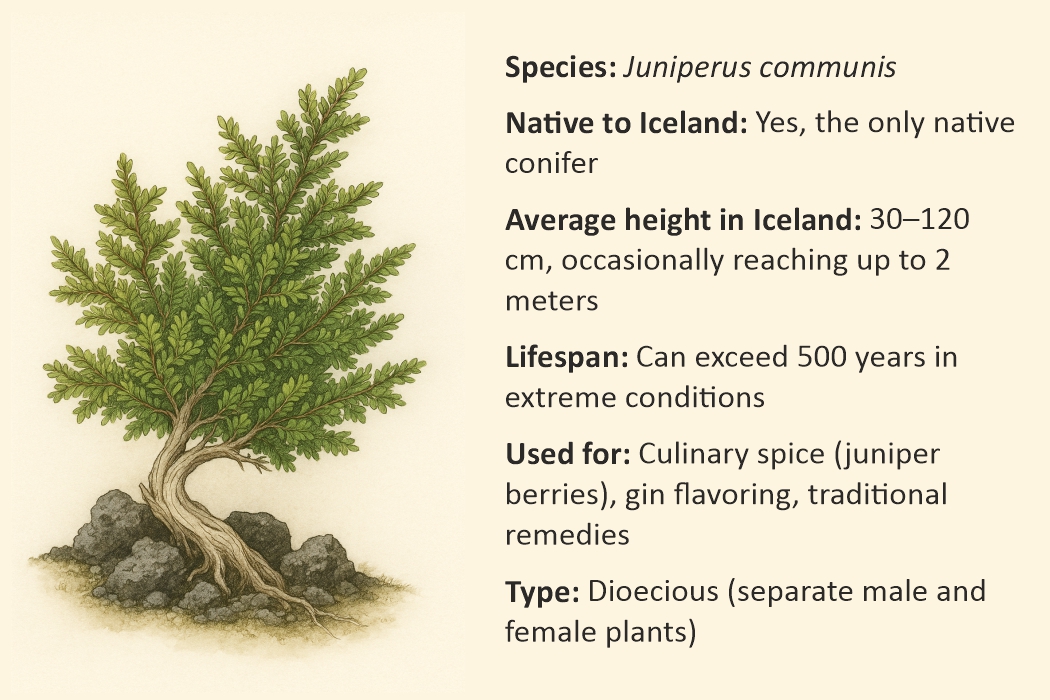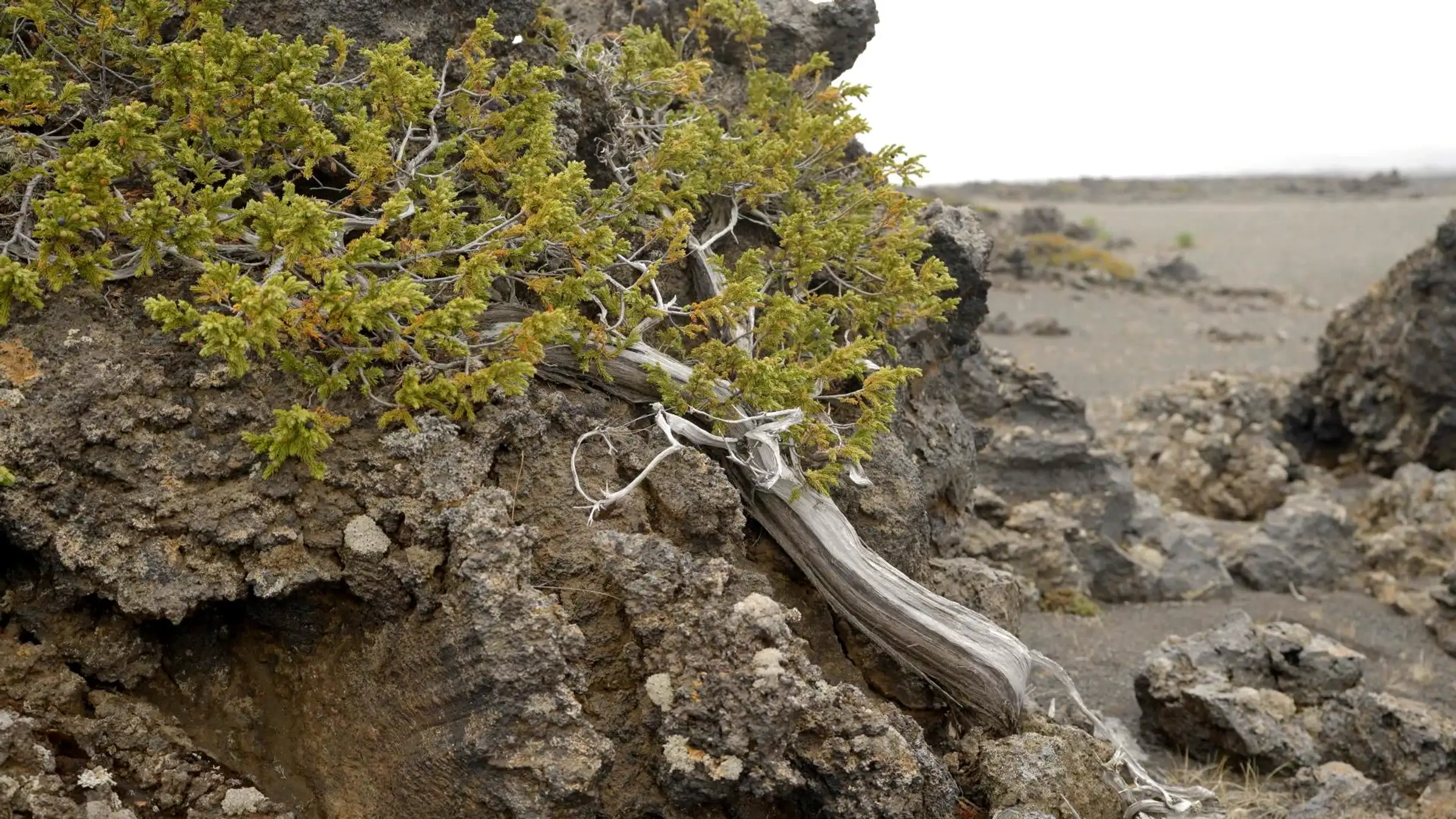From 280 to 500 years in just two years, Iceland’s oldest known plant turns out to be a long-living relic of climate history, quietly thriving in the lava fields of the north.
Until recently, the oldest known living plant in Iceland was a humble juniper nestled in the erosion-scarred highlands of Hólasandur, estimated to be about 280 years old. But now, a newly discovered specimen near Lake Mývatn has more than shattered that record, it is believed to be at least 500 years old, potentially even older.
The ancient juniper, found by botanist Pawel Wasowicz during moss research in the lava-strewn wilderness north of Mývatn, is the oldest known living plant in Iceland by more than two centuries. The findings, published in Quaternary Science Reviews, offer more than just a surprising update to Iceland’s dendrological records, they open a rare window into climate conditions dating back to the 12th century.
A Plant Older Than Iceland’s Turf Houses
Junipers in Iceland are often overlooked: they grow close to the ground, windswept and unassuming, rarely resembling trees in the traditional sense. But appearances deceive. The newly discovered Mývatn juniper is more than a survivor, it is a silent witness to half a millennium of ecological and climatic shifts.
Unlike trees that tower in other countries, Icelandic junipers huddle low to the ground, adapted to harsh weather and nutrient-poor soils. Yet their woody stems grow so slowly that counting their rings requires microscopic examination. In this case, researchers avoided harming the plant by extracting a minimal sample from the upper stem, enough to estimate its venerable age without cutting it down.
Nearby, dead specimens were also found, some dating as far back as 1159, expanding Iceland’s tree-ring based climate records by centuries.
A Quiet Revolution in the Highlands
Only two years ago, dendrochronologist Ólafur Eggertsson and colleagues at the Icelandic Soil Conservation Service believed they had found Iceland’s oldest "tree", a juniper in Hólasandur with 250 counted rings, likely around 280 years old. At the time, that was a major discovery. But it turns out that Iceland's northern highlands may be hiding more ancient treasures beneath their bleak surfaces.
The new find not only dwarfs the 2023 record but shifts our understanding of how long plants can survive in Iceland’s subarctic conditions, and what secrets they may hold.
 From Survivor to Storyteller
From Survivor to Storyteller
These gnarly shrubs are more than record-holders; they are storytellers. Each narrow ring reflects a year of growth, or struggle, and taken together, the rings map Iceland’s environmental story through time.
With most of Iceland’s historical wooden architecture long decayed, turf houses did not lend themselves to preservation, dendrochronological data are rare. Junipers, therefore, serve an unexpected role: as organic climate archives.
The collaboration between the Icelandic Institute of Natural History, University of Silesia, and the University of Cambridge shows how even the smallest plants can tell big stories. The researchers hope that such discoveries will underscore the value of Iceland’s modest vegetation, often dismissed as mere scrub, as a scientific resource worth protecting.
A New Role for Junipers?
Though classified as a shrub in Iceland due to their modest size, Juniperus communis is technically a tree species. It grows tall in other parts of the world and may now be gaining height even in Iceland’s warming climate. In places like Þórsmörk and Fnjóskadalur, junipers are starting to rise above their traditional spindly form.
As climate change shifts growing conditions, could these plants become more prominent in Iceland’s landscape? Some researchers believe the juniper could play a larger role in native forest regeneration, biodiversity preservation, and even carbon sequestration efforts in the future.
Secrecy for Survival
Wasowicz has not revealed the precise location of the 500-year-old juniper, and for good reason. Until the site is formally protected, he fears the plant could suffer damage from visitors or overzealous admirers. For now, the plant’s exact coordinates remain a secret, as delicate as the ecosystem it represents.
In a country where most trees are imported and most forests are planted, Iceland’s ancient junipers remind us that some of the country’s most remarkable living things have been here all along, quietly holding the line through fire, frost, and centuries of change.
Source: RUV, Skógræktin, ScienceDirect

